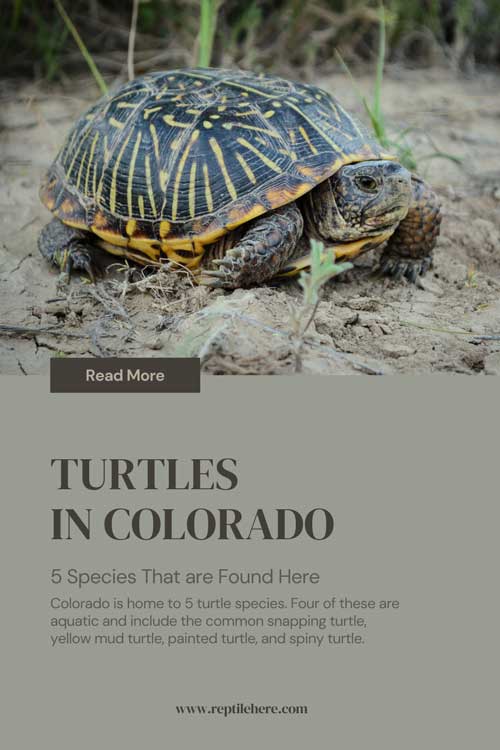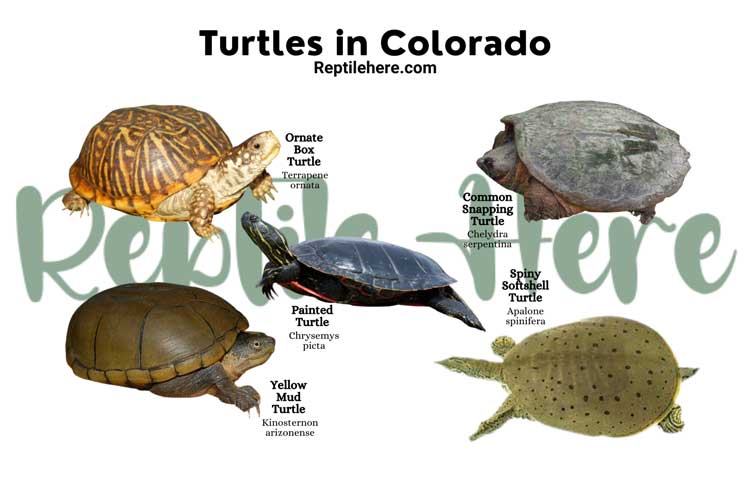Turtles in Colorado – 5 Species That are Found Here
Colorado is home to 5 turtle species. Four of these are aquatic and include the common snapping turtle, yellow mud turtle, painted turtle, and spiny turtle.
On top of this, it is home to the ornate box turtle, a terrestrial species which prefers living in the woodland areas in Eastern Colorado.
This article will discuss basic information about all these turtle species in Colorado.
We will discuss important information about each species including physical appearance, average adult size, what they eat, where they live, lifespan, and conservation status.
5 Types Of Turtles In Colorado
Contents
1. Common Snapping Turtle
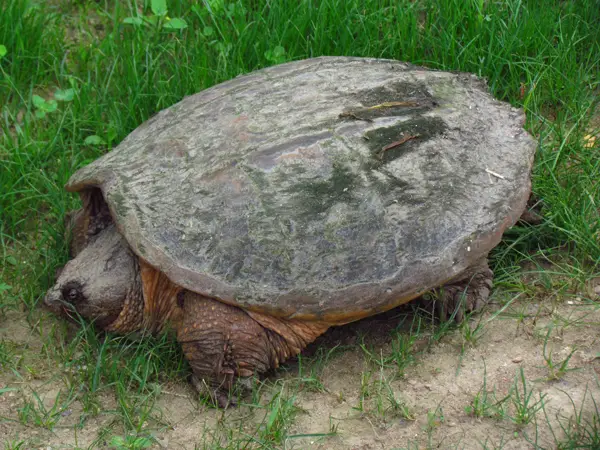
- Scientific name: Chelydra serpentina
- Common name: Snapping Turtle
- Family: Chelydridae
- Size: 8 to 18 1/2 inches
- Lifespan: 30 to 50 years or more
- Conservation status: Least Concern
Common snapping turtles are widespread throughout Colorado. An average adult is pretty large and has a shell length of 18½ inches long.
This species has a chunky head, a long tail, and large webbed feet. The shell color is black or olive and has no distinct pattern. These Colorado snapping turtles are known for their powerful jaws—they’re so strong that these turtles eat other turtles!
You’ll find them in waterbodies with muddy bottoms. Examples include marshes, ponds, lakes, rivers, and even shallow streams. They generally prefer waters with aquatic vegetation in plenty and foods such as fish, frogs, birds, etc.
These Colorado turtles generally show docile behavior but can get quite aggressive if taken out of water. The best way to calm it is to take it back to the waters, where it feels safe.
2. Yellow Mud Turtle
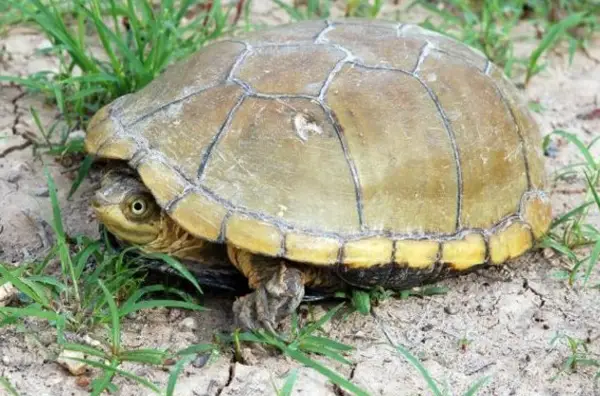
- Scientific name: Kinosternon arizonense
- Common name: Yellow Mud Turtle, Mud Turtle
- Family: Kinosternidae
- Size: 4-5 inches
- Lifespan: 40 years
- Conservation status: Least concern
The Yellow mud turtle is a species native to Colorado and prefers living in any waterbody it can come across in Colorado state.
Possible places you can find it includes muddy pools, cattle tanks, irrigation ditches, sewer drains, and even cisterns!
This turtle will spend more time on land migrating to new water sources and is never picky about where it can stay.
It has a flattened upper shell part, with colors varying from brown to black or olive. It also features dark brown edges around its scutes. The skin color is usually olive.
Males have a sharp or horny end as a distinctive feature.
This Colorado yellow mud turtle is omnivorous like any other mud turtle. Its diet is made up of a variety of foods including tadpoles, leeches, crayfish, fairy shrimp, and fish.
It will also eat frogs, slugs, and snails. And as an opportunistic feeder, it will also eat decaying animal and plant matter.
3. Painted Turtle
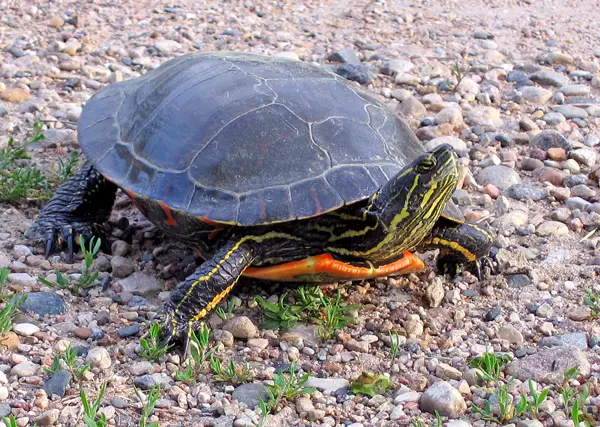
- Scientific name: Chrysemys picta
- Common name: Painted Turtle
- Family: Emydidae
- Size: 4 to 6 inches
- Lifespan: 30 to 50 years
- Conservation status: Least Concern
The painted turtle is one of the most recognizable turtle species in Colorado, thanks to its beautiful and unique coloring. The bright reds and yellow-green markings on its shell, head, and limbs are no doubt a beauty to behold!
Note that this species has up to 4 subspecies (Eastern, Western, Midland, and Southern species). And although they may slightly differ in appearance, they all have similar behavior.
The painted turtle species in Colorado has been observed to live near water bodies with minimal movement. Examples include marshes, ponds, slow-moving streams with sandy/muddy bottoms, small lakes, etc.
They also prefer areas with aquatic plants in plenty as they make their primary food source in the wild.
One interesting fact about these Colorado turtles is their ability to hold their breath for up to 30 hours when inside temperate water. Moreover, they’re capable of standing dominant in freezing cold waters for up to 4 months.
Unfortunately, it’s not easy to establish the population of these turtles in Colorado. This is because most people who pet them end up releasing them back into the wild.
This contributes to an ever-expanding range plus unstable reproduction rates for these turtles.
Also read: Turtles in New Mexico
4. Spiny Softshell Turtle
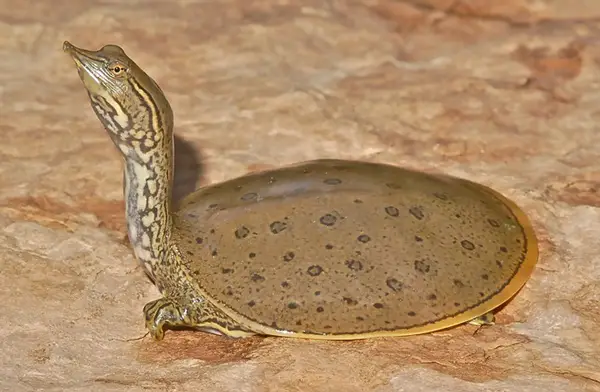
- Scientific name: Apalone spinifera
- Common name: Spiny Softshell Turtle
- Family: Trionychidae
- Size: 5 to 9 inches (males), 12 to 20 inches (females)
- Lifespan: 30 to 70 years
- Conservation status: Least Concern
The Spiny softshell turtle is a medium-to-large freshwater species that lives in Colorado’s lakes, streams, and rivers with muddy or sandy bottoms and little or no vegetation.
Female spiny softshell turtles are usually larger than males. And unlike other turtles, this species has a flexible, leather-like carapace that’s extremely rounded and flattened. The shell color can be olive grey or yellow-brown. Just like other softshell turtles, this species also has a snorkel-like snout.
The young ones feature well-defined round spots that are easily visible on the shell (though these spots become invisible as they transition to adulthood).
Spiny softshell turtles in Colorado tend to eat anything they find in the waters including crayfish, insects, small fish, and so on. They hunt by burying themselves in the mud or sand while keeping their head uncovered to grab food as it swims by.
These turtles are also able to breathe underwater by taking in oxygen through their throat skin. This is a useful adaptation given that they don’t spend a lot of time out of water.
Other adaptations of these turtles include webbed feed, long claws, and extremely flat shells that enable them to quickly swim away from predators and burry in the muddy bottom of the waters they reside in.
5. Ornate Box Turtle
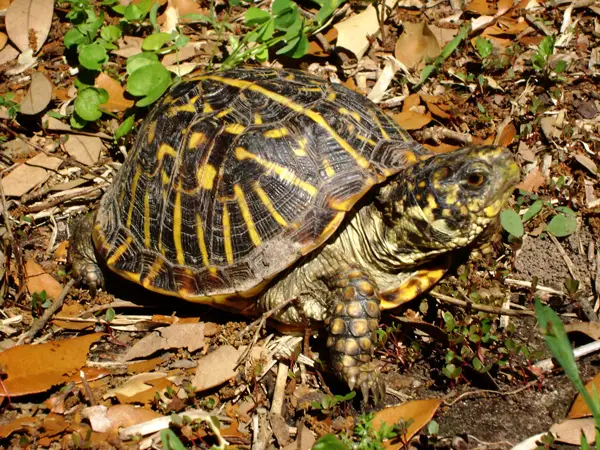
- Scientific name: Terrapene ornata
- Common name: Ornate Box Turtle
- Family: Emydidae
- Size: 5 to 7 inches
- Lifespan: 40 to 60 years
- Conservation status: Near Threatened
Ornate box turtles are present in Colorado and are recognized by the beautiful pattern on their carapace. This eye-pleasing pattern is sometimes referred to as a starburst pattern.
Their skin is grey and may feature yellow or white spots. Male heads occasionally feature green color.
Though there exists a little distinction between the males and females of these Colorado box turtles, males are generally smaller than females.
During hot weather, this turtle requires water to help regulate its body temperature.
The Colorado species of turtle are known to hibernate in burrows during cold weather. They’re also capable of surviving in frozen soils for several days.
Being omnivorous in nature, and opportunistic feeders, these turtles will gladly feed anything available to them in their habitat or what’s abundant in a given season. They have been observed eating fruits, vegetables, grasshoppers, and various other insects.
Also, keep in mind that these box turtles are pretty shy and don’t like being handled excessively. As such, you may want to avoid approaching them suddenly while in the wild in Colorado.
Related: Turtles in Missouri
Conclusion
These are the 5 turtle species native to Colorado. These species include aquatic and terrestrial turtles. The specific species include the common snapping turtle, yellow mud turtle, painted turtle, spiny softshell, and ornate box turtle.
Most of these species are not endangered and are rated as “Least Concern” conversation status. The basic information we have provided about each of the species will help give you a clear picture of the clear attributes each turtle carries.
